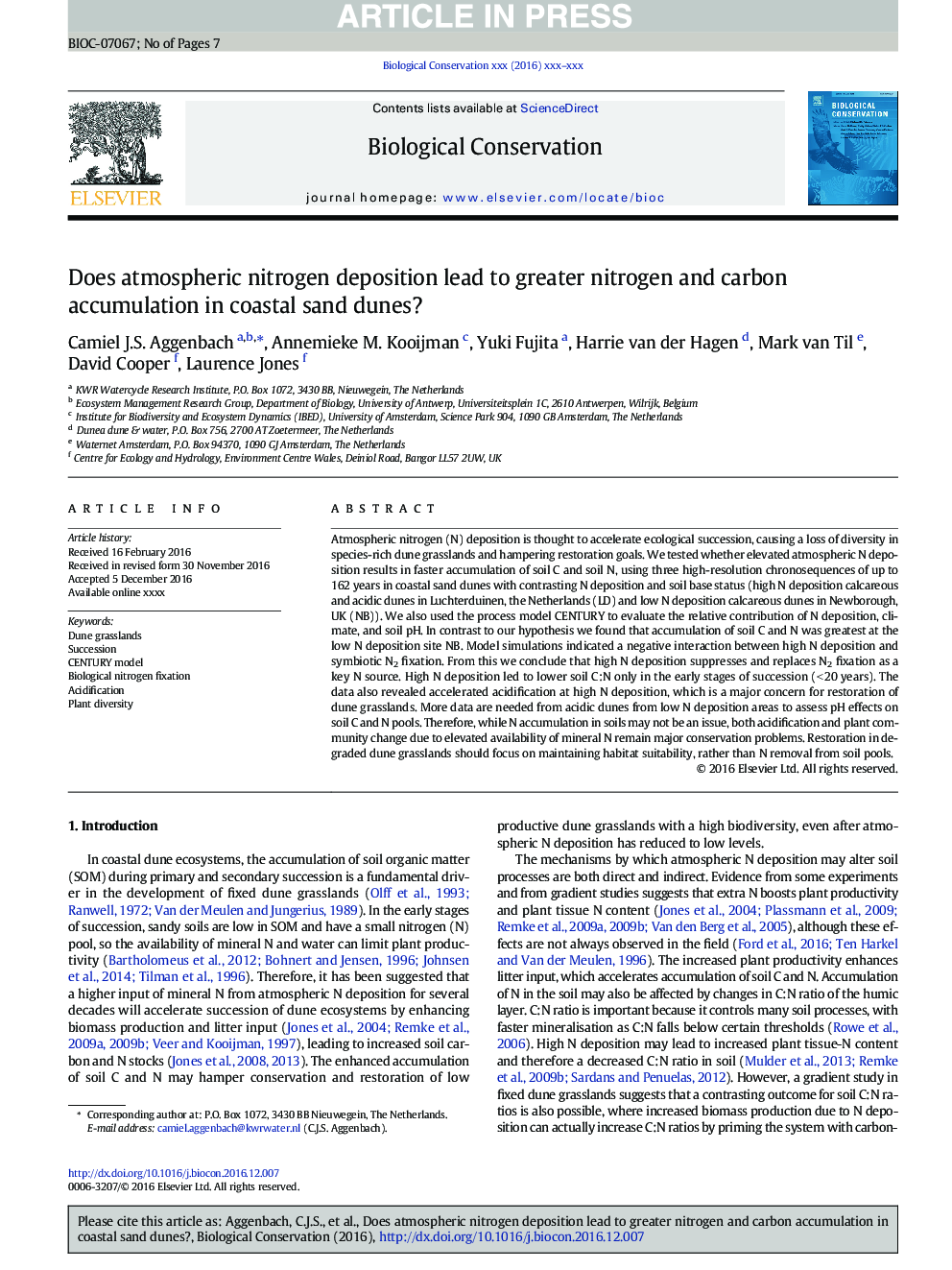| Article ID | Journal | Published Year | Pages | File Type |
|---|---|---|---|---|
| 5743067 | Biological Conservation | 2017 | 7 Pages |
Abstract
Atmospheric nitrogen (N) deposition is thought to accelerate ecological succession, causing a loss of diversity in species-rich dune grasslands and hampering restoration goals. We tested whether elevated atmospheric N deposition results in faster accumulation of soil C and soil N, using three high-resolution chronosequences of up to 162Â years in coastal sand dunes with contrasting N deposition and soil base status (high N deposition calcareous and acidic dunes in Luchterduinen, the Netherlands (LD) and low N deposition calcareous dunes in Newborough, UK (NB)). We also used the process model CENTURY to evaluate the relative contribution of N deposition, climate, and soil pH. In contrast to our hypothesis we found that accumulation of soil C and N was greatest at the low N deposition site NB. Model simulations indicated a negative interaction between high N deposition and symbiotic N2 fixation. From this we conclude that high N deposition suppresses and replaces N2 fixation as a key N source. High N deposition led to lower soil C:N only in the early stages of succession (<Â 20Â years). The data also revealed accelerated acidification at high N deposition, which is a major concern for restoration of dune grasslands. More data are needed from acidic dunes from low N deposition areas to assess pH effects on soil C and N pools. Therefore, while N accumulation in soils may not be an issue, both acidification and plant community change due to elevated availability of mineral N remain major conservation problems. Restoration in degraded dune grasslands should focus on maintaining habitat suitability, rather than N removal from soil pools.
Related Topics
Life Sciences
Agricultural and Biological Sciences
Ecology, Evolution, Behavior and Systematics
Authors
Camiel J.S. Aggenbach, Annemieke M. Kooijman, Yuki Fujita, Harrie van der Hagen, Mark van Til, David Cooper, Laurence Jones,
